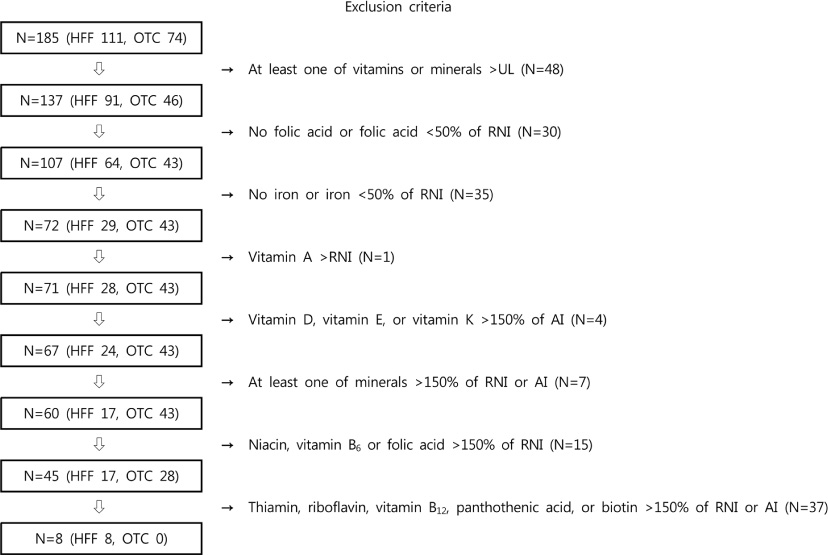Nutrient Composition and Content of Vitamin and Mineral Supplements and Their Appropriateness for Pregnant and Lactating Women in Korea
Article information
Abstract
Objectives
Use of dietary supplements containing vitamins and minerals is growing in Korean adults, especially in pregnant and lactating women. Vitamin and mineral supplements are available in different composition and in a wide range of contents. The purposes of the study were to examine nutrient composition and content of vitamin and mineral supplements for pregnant and lactating women and assess their appropriateness as dietary supplements.
Methods
Information on the name, manufacturer, nutrient composition, and usage of vitamin and mineral supplements for pregnant and lactating women were obtained from the homepage of the Food Safety Information Portal managed by the Ministry of Food and Drug Safety, and Korean Index of Medical Specialties. A total of 264 products were identified.
Results
Among 264 products, 26.1% were single nutrient products, and 73.9% were multinutrient products. The most commonly included nutrient was iron (70.1%), folic acid (66.3%), vitamin B12 (45.8%), vitamin C (38.6%), and vitamin B6 (38.6%). Although more than 50% of products contained nutrients less than 150% of Recommended Nutrient Intakes or Adequate Intakes for daily use, some products contained inappropriately high amounts of nutrients. When a maximum daily dose of supplements was taken as described on the label, iron in 73 products (39.5%), folic acid in 14 products (8.0%) were likely to be consumed in amounts greater than Tolerable Upper Intake Levels. Most products were assessed as inappropriate for pregnant women due to the possibility of excessive intake of vitamins or minerals when compared with Dietary Reference Intakes.
Conclusions
Pregnant and lactating women need to carefully select dietary supplements containing adequate amounts of vitamins and minerals. Nutritionists should provide guidelines regarding selection of appropriate vitamin and mineral supplements for pregnant and lactating women.







